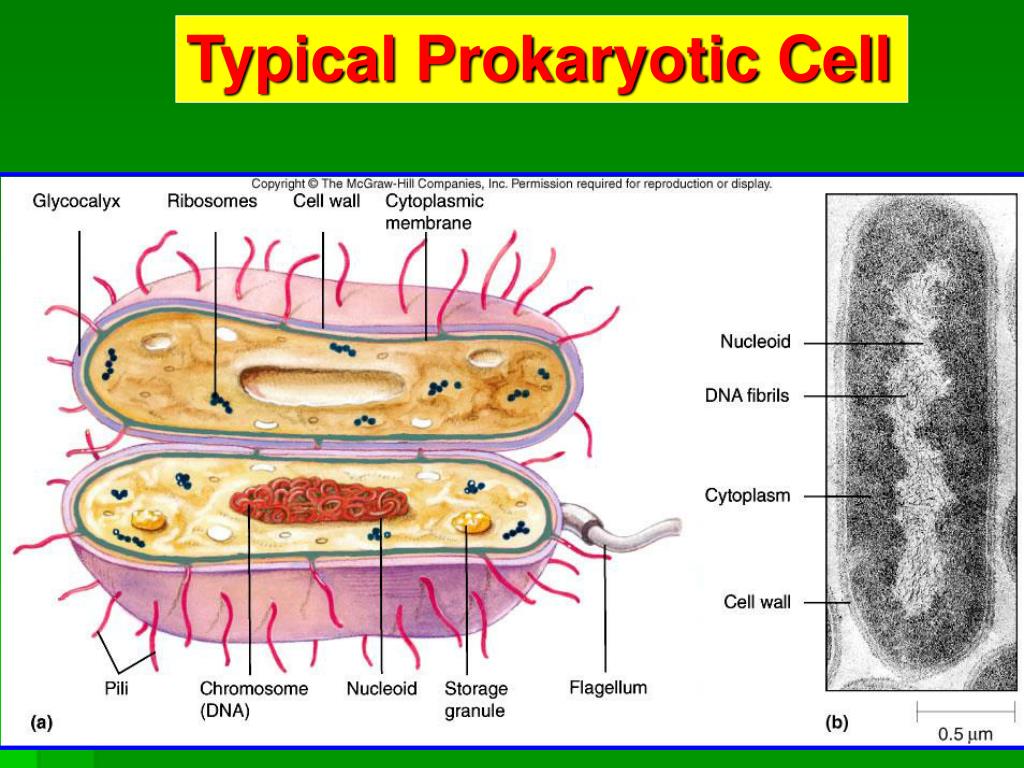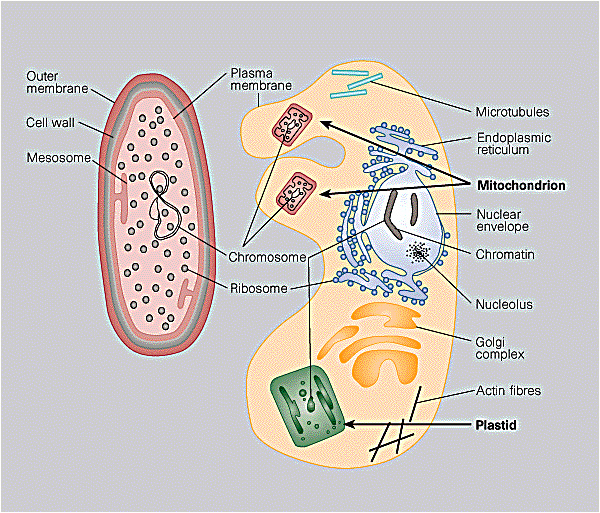Plasmids which consist of extra-chromosomal DNA are also present in many species of bacteria and archaea. Eukaryotic cells Prokaryotic cells Similarities Contain cytoplasm have one or more chromosomes have ribosomes and are bounded by a plasma membrane Differences Larger and contains more organelles Smaller and has fewer organelles Examples Any human cell An E.

Ppt Typical Prokaryotic Cell Powerpoint Presentation Free Download Id 3094398
A description of cell structure and cell growth by division is given in the chapters comprising this unit.

. The features of a typical prokaryotic cell are shown. Structure of a typical prokaryotic cell. Figure 612 HIV an enveloped icosahedral retrovirus attaches to a cell surface receptor of an immune cell and fuses with the cell membrane.
Similarly compartmentalization commonly noted as a distinguishing feature of eukaryotic cells is also prevalent in the prokaryotic world in the form of protein-bounded and lipid-bounded organelles. These cytoplasmic structures include ribosomes the DNA chromosome mRNA proteins and metabolites nucleoid and plasmids. Prokaryotic cells are smaller as a general rule and lack much of the internal compartmentalization and complexity of eukaryotic cells.
Cell theory also created a sense of mystery around living phenomena ie physiological and behavioural processes. Solution for Describe the three body forms typical of animals. Cells can acquire specified function and carry out various tasks within the cell such as replication DNA repair protein synthesis and motility.
Prokaryotes especially Archaea can survive in extreme environments that are inhospitable for most living things. Viral contents are released into the cell where viral enzymes convert the single-stranded RNA genome into DNA and incorporate it. Cell theory that emphasised the unity underlying this diversity of forms ie the cellular organisation of all life forms.
The majority of plant viruses are positive-strand ssRNA and can undergo latency chronic or lytic infection as observed for animal viruses. Pleomorphism is a term used to describe cell morphology when there is a variety of sizes shapes and arrangements among cells of a single bacterial species. Animal viruses can undergo latency similar to lysogeny for a bacteriophage.
Cytoplasmic inclusions within the cytoplasm are characterized by a granular appearance and vary based on cell type. In fact proteins once thought to be the purely eukaryotic inventions including relatives of actin and tubulin control prokaryotic cell shape DNA segregation and cytokinesis. The structure of DNA is dynamic along its length being capable of coiling into tight loops and other shapes.
No matter which type of cell we are considering all cells have certain features in common such as a cell membrane DNA and RNA cytoplasm and ribosomes. Each diplomonad cell has two identical nuclei and uses several flagella for locomotion. Upon maturation the plasmodium takes on a net-like appearance with the ability to form fruiting bodies or sporangia.
Describe representative protist organisms from each of the six presently. DNA is a long polymer made from repeating units called nucleotides each of which is usually symbolized by a single letter. Either A T C or G.
Coli cell in. In all species it is composed of two helical chains bound to each other by hydrogen bonds. Such as glycolysis to generate energy.
BaCterIal COMpOnents Bacterial cells contain a number of components that are located within the interior of the cell known as the cyto-plasm or cytosol. Bacteriophages inject DNA into the host cell whereas animal viruses enter by endocytosis or membrane fusion. The cell from the Latin word cellula meaning small room is the basic structural and functional unit of lifeEvery cell consists of a cytoplasm enclosed within a membrane which contains many biomolecules such as proteins and nucleic acids.
Typical morphologies of bacteria are shown in Figure 1-1. Complete the table that compares prokaryotic and eukaryotic cells. A unicellular microorganism was recovered from a hot spring 95oC in Wyoming.
Macromolecules within the cytoplasm include DNA ribosomes and proteins.

The Prokaryotic Cell Biology For Majors Ii

Prokaryote Structure Article Khan Academy

Typical Prokaryotic Left And Eukaryotic Right Cells Learn Science At Scitable
0 Comments